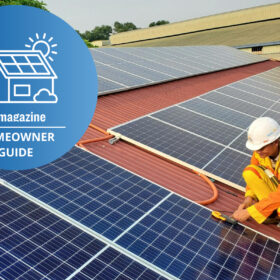Delta Electronics secures 1 GW solar inverter order from KP Group
Delta Electronics will supply solar inverters, energy storage, green hydrogen systems, and EV charging infrastructure for KP Group’s clean energy projects across India and overseas.
India’s solar backbone can’t be outsourced: A case for secure, homegrown inverters
In a world where electricity defines sovereignty, allowing foreign-made devices to sit at the core of India’s solar infrastructure is nothing short of national negligence. In today’s age, power is not just electricity—it is sovereignty. We cannot afford blackout-level vulnerabilities induced by foreign-made solar inverter hardware with security loopholes.
Hidden devices found in Chinese-made inverters in the US, reports Reuters
US officials are reassessing the risks posed by Chinese-made devices in renewable energy infrastructure according to news agency. Reuters cites two unnamed sources, who would only provide a few details.
pv magazine Homeowner Guide: Top tips and red flags to home solar
pv magazine is compiling a guide to home solar installations, aimed at those who are interested in installing but are new to the market and want to make an informed decision. We have spoken to associations, installers and industry specialists in major solar markets across the globe to compile best practice guidance and advice that aims to be applicable to home solar installations anywhere in the world. The first part of the series aims to help homeowners looking to embrace PV identify the best installers on the market.
Sunora expands into solar inverter market with new launches at RenewX 2025
Gujarat-based solar module manufacturer Sunora has unveiled its grid-connected and hybrid inverters at RenewX 2025.
SMA America releases 99.2% efficient grid-scale battery storage inverter
The inverters use a silicon carbide metal-oxide-semiconductor field-effect transistor for high power conversion capability.
WattPower hits 15 GW string inverter sales milestone
WattPower has achieved the feat of producing and supplying around 15 GW of solar string inverters in just 17 months.
Top 5 global inverter trends to watch in 2025
Challenges and innovations drive solar and energy storage inverter industry forward in 2025.
Optimizing photovoltaic systems: Best practices for economic, technical key performance indicators
As the global solar energy industry grows, so does the need for accurate monitoring of performance and financial viability. The latest report by IEA PVPS Task 13, “Best Practice Guidelines for the Use of Economic and Technical KPIs,” provides a comprehensive framework to address this issue. This article explores the importance, methodologies, and applications of Key Performance Indicators (KPIs), with a focus on their role in optimizing PV systems.
String inverters best for partially shaded PV systems, says IEA-PVPS
The International Energy Agency (IEA) Photovoltaic Power Systems Programme (PVPS) has released a technical report exploring innovations and challenges in optimizing the performance of partially shaded PV systems.















